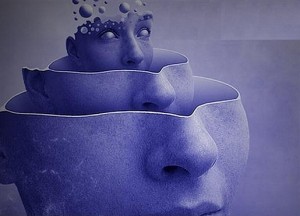We are nearly done with the 5 kleshas (obstacles of the mind) as part of our yoga philosophy in class. They are fascinating little concepts that really ring true for me and once I knew about them I noticed them everywhere. Because of the opposed relationship between the 3rd and 4th obstacles, Raga and Dvesha, I thought it would make sense to discuss them together in this newsletter. Both are tightly connected to the natural aspect of our mind that continually operates the like/dislike judgment. This is how we learn, but when ‘the likes’ become strong desires, or greed, we notice Raga and when ‘the dislikes’ turn into hate and/or fear, we are dealing with Dvesha.

RAGA
Raga is desire to repeat something that gave you pleasure previously. In the extreme, this can take the form of greed, lust and addiction.
But how do you know that the same thing will give you the same amount of pleasure? Perhaps you may gain no pleasure at all?
In our society we see the effects of Raga all the time. Marketing is completely geared to creating a strong desire for things that companies sell. Tapping into our subconscious, we are made to believe we deserve, whatever they are trying to sell. No wonder we feel deprived, when we don’t get them. It is very beneficial for out well-being to be aware of the dukha (suffering)-inducing powers of marketing, in our Western society.
Parents, who are strongly attached to their children, find it hard to let their children go to kinder, school, uni and finally their own adult destiny. In a strange way they don’t want them to grow up or go away. The sayings ‘love hurts’ and ‘When you leave me, can I come too’, very aptly describe the problem of raga in these situations.
It’s only when we can let go of desire that we can find contentment. The only constant is change. We need to move with and adapt to the change to remain content.
In life we cannot make other people love us, or do things we want them to do. In yoga or meditation we cannot wish to repeat a wonderful practice from the past, because now is the present and now is new and different from the past.
If we are trying too hard to do something, (we desire it so much) we often get stuck or muck up. Only when we find ourselves in a relaxed state, free from wanting, will grace enter our lives, showing us beauty and inspiration.
Letting go of a desire requires us to recognise it’s existence first before placing it in a larger context. To stop wanting something is like having a weight lifted of your shoulders, quite liberating.

DVESHA
Dvesha is the root cause for human suffering: War, break-up, religious quarrel, fear, murder, revenge and self-hatred are all forms of Dvesha. Wherever there is Dvesha, there is jealousy.
Often we are subconsciously driven to avoid previously painful experiences. We tend to accumulate dislikes and hold on to them. They become part of the invisible walls we build around ourselves. Our aversions are expressed in: ‘I don’t talk to him/her, because he/she was nasty to me’, or ‘I don’t go there or do that anymore, because I had a bad experience’ or ‘I need to get away, because this is unbearable’.
Habitually shutting ourselves off from people or things we dislike, creates a narrow view of the world. These habits are dangerous, because when we feel trapped by our fears and dislikes, we start hating ourselves. As part of our yogic practice of self-study, it is advised to re-visit our dislikes from time to time, in order to keep an open mind to change.
Also in yoga practice we like and dislike certain poses. Let’s explore why we have these judgements. Do we like certain asanas, because they feel good, or because we can do them easily? Do we dislike other poses simply because we find them hard, or is there more to the story?
The journey of yoga is one that helps us become more aware of our thoughts and actions. Our self-knowledge will gradually lead us towards a deeper sense of well-being and contentment.
May the benefits of your practice stay with you and extend beyond you,
Namaste, Ernestine



